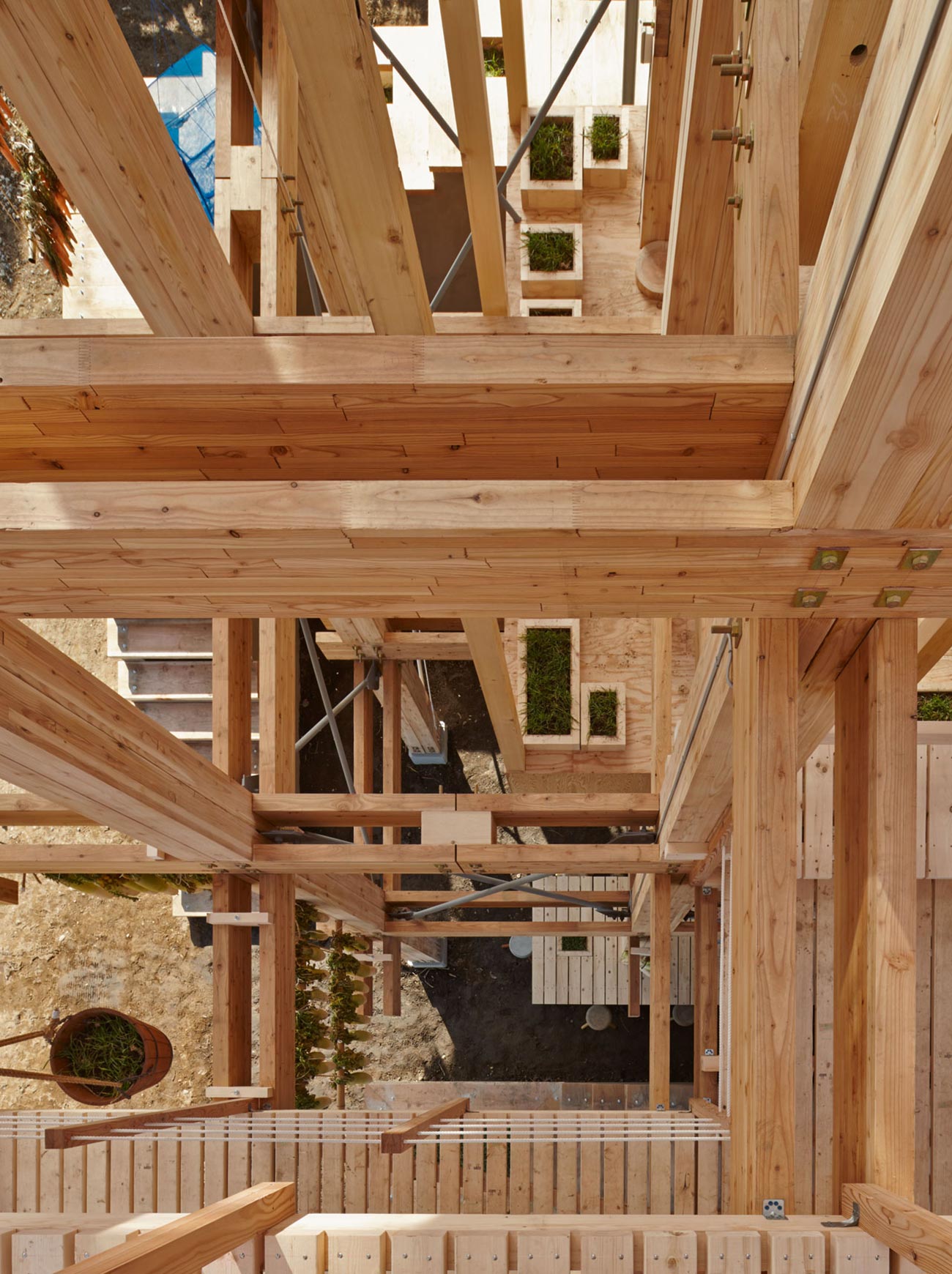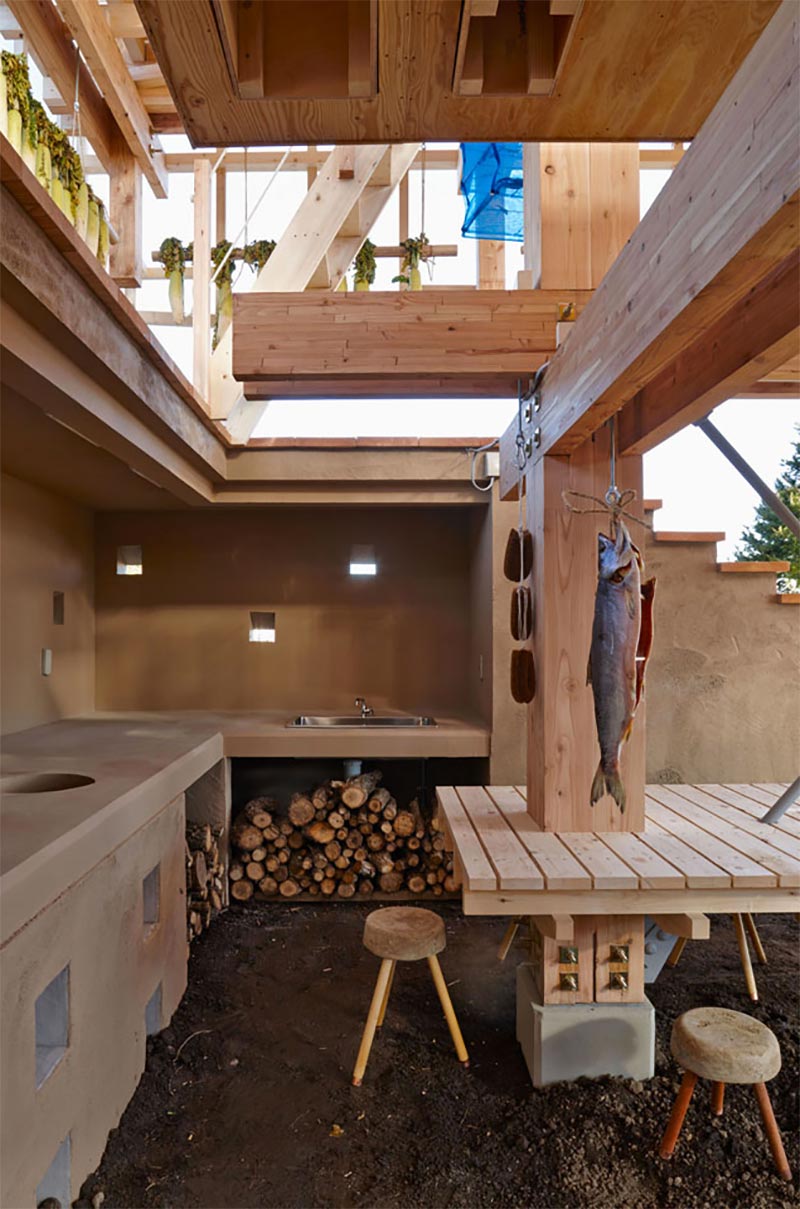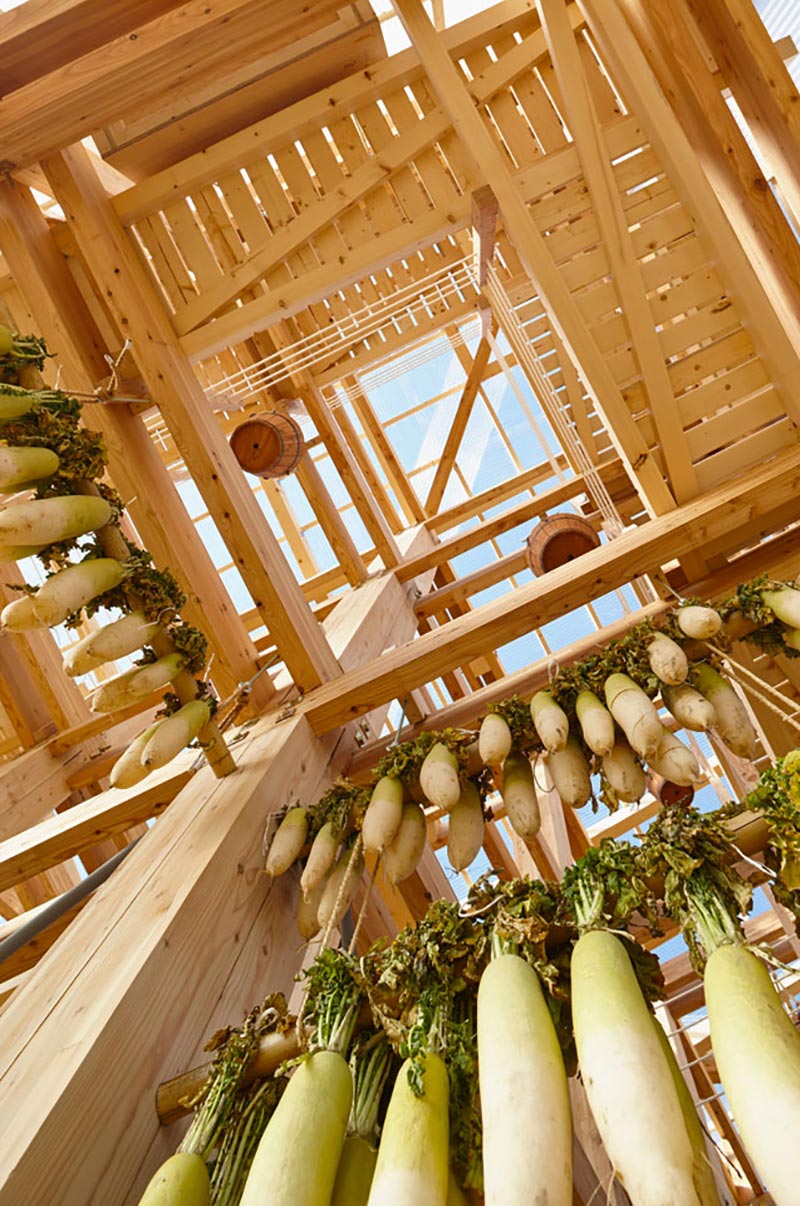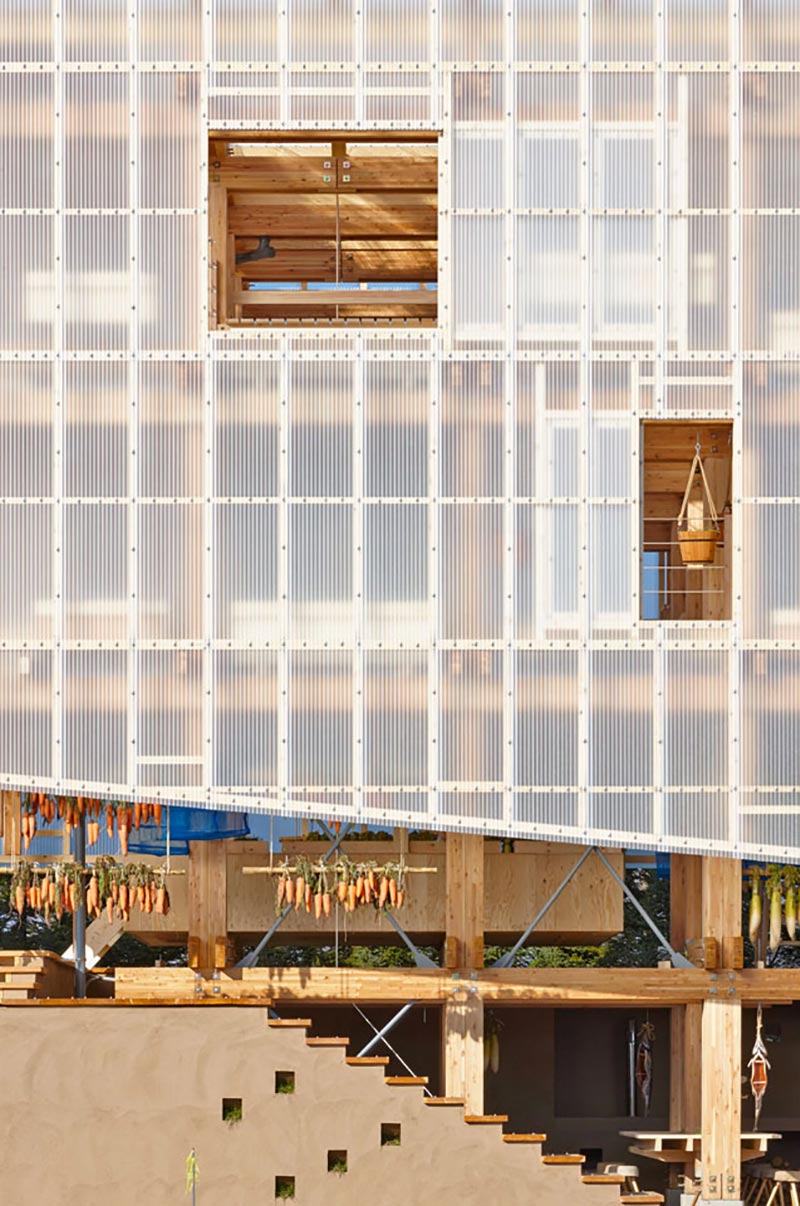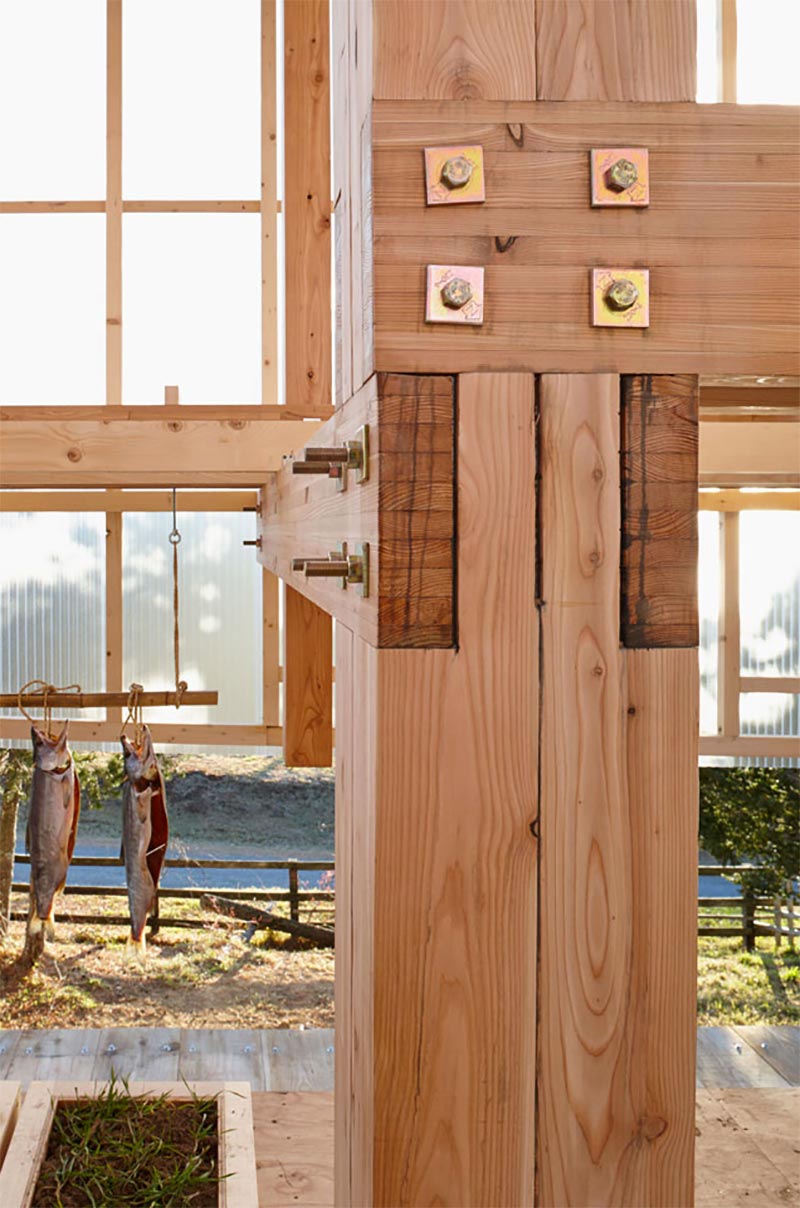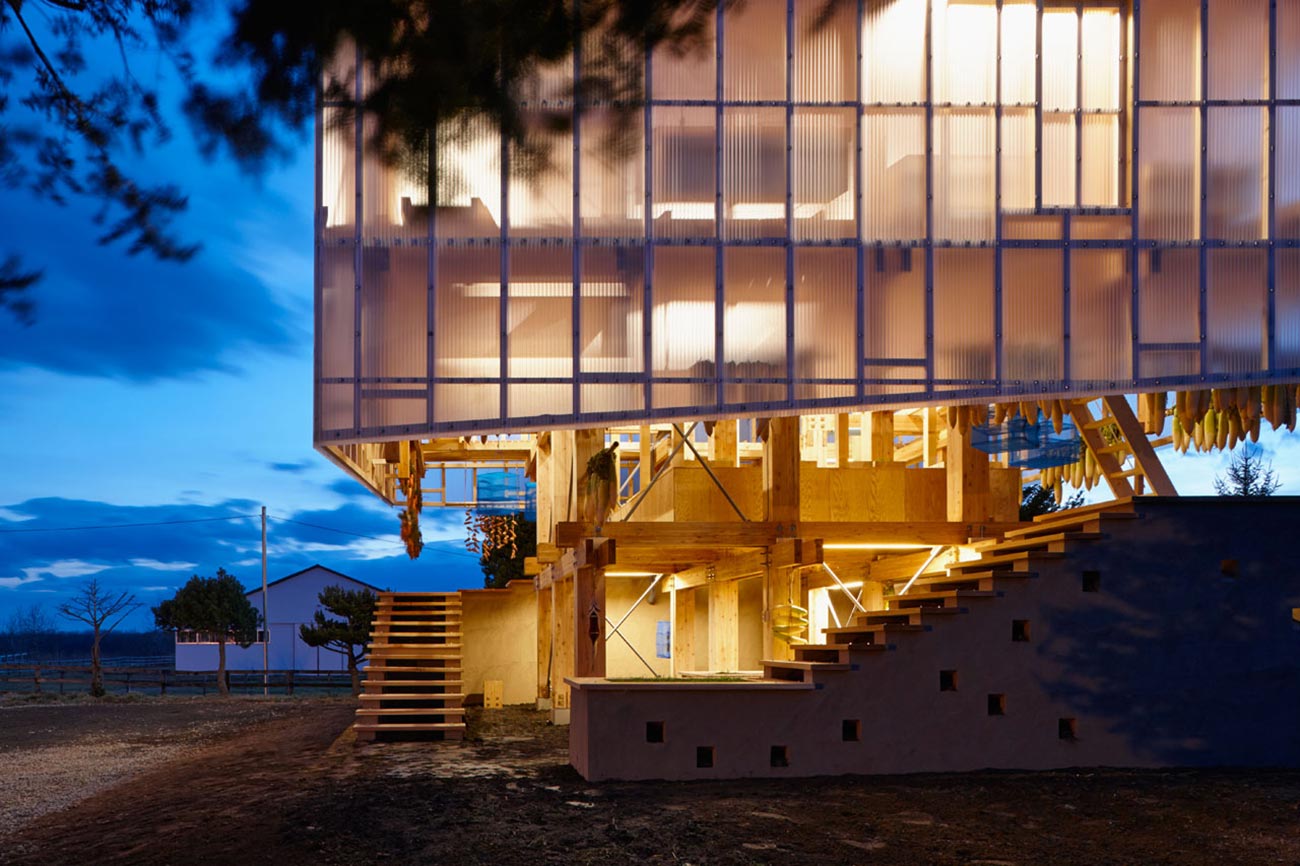People most often associate architecture with homes and closed shelters, but there is more to it than that. This design, “Nest We Grow,” is an open agricultural research center by students in the College of Environmental Design at the University of California, Berkeley. The construction is a Memu Meadows Center for Research on Environmental Technologies in Hokkaido, Japan.
Conceived of as a “protective garden,” the center is not a traditional building but instead a system of tiers and panels created for the benefit of cultivating, curing, cooking, and composting food for the local community. The innovative building stands on a concrete foundation and features wooden staircases, laminated larch columns, and corrugated polycarbonate panels above. Its roof harvests rain and snow, which trickle into the built-in irrigation system to quench the thirst of the growing carrot and daikon radish.
The sustainable agriculture practiced on site includes fish and meat as well as vegetables. Indeed, one can see salmon hanging from the rafters in the photographs here. The space is also used for venison preparation, wheat farming, and communal tea. At the heart of this design, there is a fire pit and tea kettle in reference to traditional teahouses. Taking a sip of hot tea, one can taste the local culture and see, smell, and feel the work that goes into a good meal.
Via Domus



